You are using an out of date browser. It may not display this or other websites correctly.
You should upgrade or use an alternative browser.
You should upgrade or use an alternative browser.
FDNY and NYC Firehouses and Fire Companies
- Thread starter mack
- Start date
- Status
- Not open for further replies.
Engine 31's firehouse at 87 Lafayette Street, as well as the nearby NYC jail, "the Tombs", was built on a large 48 acre, 60 foot deep former pond called "Collect Pond". It had originally been Manhattan's water source and a recreational area but early 1800 manufacturing had polluted the water and it was poorly filled in. Architect Napoleon LeBrun used wooden pilings for stability to build the large firehouse.
Collect Pond:
"The Collect Pond, or Fresh Water Pond, was a body of fresh water in Chinatown, lower Manhattan in New York City. For the first two hundred years of European settlement of Manhattan, Collect Pond was the main water supply for the growing city. It later became a jail site and is now a park...
The southwestern shore of the Collect Pond was the site of a Native American settlement known as Werpoes. A small band of Munsee, the northernmost division of the Lenape, occupied the site until the Dutch settlement of New Amsterdam was established. It is possible that members of this band were the participants in the famed sale of Manhattan (Manahatta) to the Dutch...
Wasteland:
In the 18th century, the pond was used as a picnic area during summer, and a skating rink during the winter. However, industries began to use the water and dump waste there. These included tanneries, breweries, ropewalks, and slaughterhouses... By the late 18th century, the pond was already considered "a very sink and common sewer".
The contaminated wastewater of these businesses flowed back into the pond, creating a severe pollution problem and environmental health hazard. Pierre Charles L'Enfant proposed cleaning the pond ... was rejected and it was decided to fill in the pond... The landfill was completed in 1811 and Middle class homes were soon built on the reclaimed land.
The landfill was poorly engineered. The buried vegetation began to release methane gas and the area, still in a natural depression, lacked adequate storm sewers. As a result, the ground gradually subsided. Houses shifted on their foundations, the unpaved streets were often buried in a foot of mud and mixed with human and animal excrement, and mosquitoes bred in the stagnant pools created by the poor drainage.
Solution:
...It was filled in from land removed from nearby Bayard's Mount, the highest hill in lower Manhattan. By 1813, the Collect Pond was virtually gone.
Several decades later, New York City obtained a new, plentiful supply of fresh water from the Croton Aqueduct. The neighborhood known as "Five Points", a notorious slum, developed near the former eastern bank of the Collect and owed its existence in some measure to the poor landfill job which created swampy, mosquito-ridden conditions on land that had originally had more well-to-do residents.
Most middle and upper class inhabitants fled the area, leaving the neighborhood open to poor immigrants that began arriving in the early 1820s. This influx reached a height in the 1840s, with large numbers of Irish Catholics fleeing the Irish Potato Famine.
The Tombs:
While the pond had been condemned, drained, and filled in by 1817, the landfill job was poorly done, and in a span of less than ten years, the ground began to sink. New York's jail, nicknamed "The Tombs", was built on Centre Street in 1838 on the site of the pond and was constructed on a huge platform of hemlock logs in an attempt to give it secure foundations. The prison building began to subside almost as soon as it was completed and was notorious for leaks in its lowest tier and for its general dampness. When the original Tombs building was condemned and demolished at the end of the century, builders sank enormous concrete caissons to bedrock, as much as 140 feet below street level, in order to give its replacement more secure foundations. This damp foundation was primarily responsible for its bad reputation as being unsanitary during the decades to come.
The design, by John Haviland, was based on an engraving of an ancient Egyptian mausoleum. The building was 253 feet 3 inches in length by 200 feet 5 inches wide and it occupied a full block, surrounded by Centre, Franklin, Elm (today's Lafayette), and Leonard Streets. It initially accommodated about 300 prisoners.
That structure was notorious for the damp conditions which resulted from being built on the landfill used to fill in the Collect Pond. The original building was replaced in 1902 with a new one on the same site connected by a "Bridge of Sighs" to the Criminal Courts Building on the Franklin Street side. That building was replaced in 1941 by one across the street on the east side of Centre Street with the entrance at 125 White Street, officially named the Manhattan House of Detention, though still referred to popularly as "The Tombs"...
It is still possible to ascertain the rough boundaries of the Collect Pond and original topography in the elevations of the streets in the area, with the lowest elevation being Centre Street which runs in the approximate center of the former pond.
http://en.wikipedia.org/wiki/Collect_Pond
Collect Pond:
"The Collect Pond, or Fresh Water Pond, was a body of fresh water in Chinatown, lower Manhattan in New York City. For the first two hundred years of European settlement of Manhattan, Collect Pond was the main water supply for the growing city. It later became a jail site and is now a park...
The southwestern shore of the Collect Pond was the site of a Native American settlement known as Werpoes. A small band of Munsee, the northernmost division of the Lenape, occupied the site until the Dutch settlement of New Amsterdam was established. It is possible that members of this band were the participants in the famed sale of Manhattan (Manahatta) to the Dutch...
Wasteland:
In the 18th century, the pond was used as a picnic area during summer, and a skating rink during the winter. However, industries began to use the water and dump waste there. These included tanneries, breweries, ropewalks, and slaughterhouses... By the late 18th century, the pond was already considered "a very sink and common sewer".
The contaminated wastewater of these businesses flowed back into the pond, creating a severe pollution problem and environmental health hazard. Pierre Charles L'Enfant proposed cleaning the pond ... was rejected and it was decided to fill in the pond... The landfill was completed in 1811 and Middle class homes were soon built on the reclaimed land.
The landfill was poorly engineered. The buried vegetation began to release methane gas and the area, still in a natural depression, lacked adequate storm sewers. As a result, the ground gradually subsided. Houses shifted on their foundations, the unpaved streets were often buried in a foot of mud and mixed with human and animal excrement, and mosquitoes bred in the stagnant pools created by the poor drainage.
Solution:
...It was filled in from land removed from nearby Bayard's Mount, the highest hill in lower Manhattan. By 1813, the Collect Pond was virtually gone.
Several decades later, New York City obtained a new, plentiful supply of fresh water from the Croton Aqueduct. The neighborhood known as "Five Points", a notorious slum, developed near the former eastern bank of the Collect and owed its existence in some measure to the poor landfill job which created swampy, mosquito-ridden conditions on land that had originally had more well-to-do residents.
Most middle and upper class inhabitants fled the area, leaving the neighborhood open to poor immigrants that began arriving in the early 1820s. This influx reached a height in the 1840s, with large numbers of Irish Catholics fleeing the Irish Potato Famine.
The Tombs:
While the pond had been condemned, drained, and filled in by 1817, the landfill job was poorly done, and in a span of less than ten years, the ground began to sink. New York's jail, nicknamed "The Tombs", was built on Centre Street in 1838 on the site of the pond and was constructed on a huge platform of hemlock logs in an attempt to give it secure foundations. The prison building began to subside almost as soon as it was completed and was notorious for leaks in its lowest tier and for its general dampness. When the original Tombs building was condemned and demolished at the end of the century, builders sank enormous concrete caissons to bedrock, as much as 140 feet below street level, in order to give its replacement more secure foundations. This damp foundation was primarily responsible for its bad reputation as being unsanitary during the decades to come.
The design, by John Haviland, was based on an engraving of an ancient Egyptian mausoleum. The building was 253 feet 3 inches in length by 200 feet 5 inches wide and it occupied a full block, surrounded by Centre, Franklin, Elm (today's Lafayette), and Leonard Streets. It initially accommodated about 300 prisoners.
That structure was notorious for the damp conditions which resulted from being built on the landfill used to fill in the Collect Pond. The original building was replaced in 1902 with a new one on the same site connected by a "Bridge of Sighs" to the Criminal Courts Building on the Franklin Street side. That building was replaced in 1941 by one across the street on the east side of Centre Street with the entrance at 125 White Street, officially named the Manhattan House of Detention, though still referred to popularly as "The Tombs"...
It is still possible to ascertain the rough boundaries of the Collect Pond and original topography in the elevations of the streets in the area, with the lowest elevation being Centre Street which runs in the approximate center of the former pond.
http://en.wikipedia.org/wiki/Collect_Pond
- Joined
- Dec 14, 2010
- Messages
- 94
Funny story about the old engine 31 when i first got on i was detailed to Stately Duane Manor for a night tour i assumed that that beautiful firehouse must have been the Manor! Nope! i can still remember the look of confusion on the current tenants faces and probably mine too! Hahaha
Engine 311/Ladder 158/Combined Fire Company 151 firehouse 145-50 Springfield Boulevard, Springfield Gardens, Queens
Engine 311 organized 145-50 Springfield Boulevard w/Ladder 158 1927
Engine 311 became Combined Fire Company 151 w/Ladder 158 1974
Combined Fire Company 151 disbanded 1977
Engine 311 reorganized 145-50 Springfield Boulevard w/Ladder 158 1977
Ladder 158 organized 145-50 Springfield Boulevard w/Engine 311 1927
Ladder 158 became Combined Fire Company 151 w/Engine 311 1974
Combined Fire Company 151 disbanded 1977
Ladder 158 reorganized 145-50 Springfield Boulevard w/Engine 311 1977
Combined Fire Company 151 organized 145-50 Springfield Boulevard 1974
Combined Fire Company 151 disbanded 1977
145-50 Springfield Boulevard:
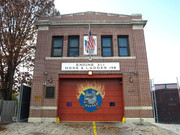





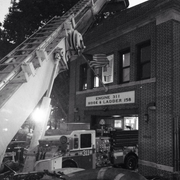
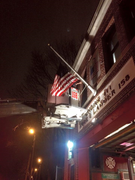

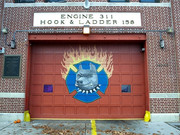
Engine 311:




Ladder 158:










Combined Fire Company 151 1974-1977:
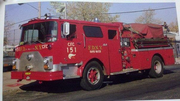


Engine 311 LODDs:
Lt. Joseph Connolly, Engine 311, Queens Box 33-8798, 152nd Avenue and 158th Street, January 19, 1972
FF Thomas L. Meny, Engine 311, February 10, 2000

Never forget.
Prior volunteer fire companies:
Springfield Engine 1 - Springfield Boulevard between 135th Street/136th Street 1897-1927:

Springfield Hose 1 - Springfield Boulevard and 133rd Road 1897-1927:
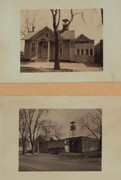
Springfield Gardens: https://www.facebook.com/pages/Engine-311-Tower-Ladder-158-FDNY/221596807942165?sk=photos_stream&ref=page_internal




Engine 311 organized 145-50 Springfield Boulevard w/Ladder 158 1927
Engine 311 became Combined Fire Company 151 w/Ladder 158 1974
Combined Fire Company 151 disbanded 1977
Engine 311 reorganized 145-50 Springfield Boulevard w/Ladder 158 1977
Ladder 158 organized 145-50 Springfield Boulevard w/Engine 311 1927
Ladder 158 became Combined Fire Company 151 w/Engine 311 1974
Combined Fire Company 151 disbanded 1977
Ladder 158 reorganized 145-50 Springfield Boulevard w/Engine 311 1977
Combined Fire Company 151 organized 145-50 Springfield Boulevard 1974
Combined Fire Company 151 disbanded 1977
145-50 Springfield Boulevard:










Engine 311:




Ladder 158:










Combined Fire Company 151 1974-1977:



Engine 311 LODDs:
Lt. Joseph Connolly, Engine 311, Queens Box 33-8798, 152nd Avenue and 158th Street, January 19, 1972
FF Thomas L. Meny, Engine 311, February 10, 2000

Never forget.
Prior volunteer fire companies:
Springfield Engine 1 - Springfield Boulevard between 135th Street/136th Street 1897-1927:

Springfield Hose 1 - Springfield Boulevard and 133rd Road 1897-1927:

Springfield Gardens: https://www.facebook.com/pages/Engine-311-Tower-Ladder-158-FDNY/221596807942165?sk=photos_stream&ref=page_internal




smokeeater405 said:Funny story about the old engine 31 when i first got on i was detailed to Stately Duane Manor for a night tour i assumed that that beautiful firehouse must have been the Manor! Nope! i can still remember the look of confusion on the current tenants faces and probably mine too! Hahaha
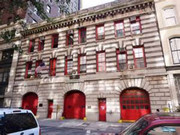
Engine 7/Ladder 1 pretty elaborate, too.
- Joined
- Mar 8, 2007
- Messages
- 5,392
This was actually 2 firehouses as the 2 bays on the left were for the 2 sections of Engine 7, each section having a pumper and a hose wagon. The right side was for Ladder 1 with their own housewatch desk, etc. and was separated from E-7 by a brick wall. The N.Y.C. Fire Museum took over Ladder 1's part of the building and L-1 moved into the engine side. I remember E-31 was in there after their house was closed then E31 moved up to E55 and Ladder 10 moved in because their firehouse was being demolished to make the WTC.
- Joined
- Dec 14, 2010
- Messages
- 94
mack said:
The Combination Fire Companies (CFCs or "Combos") in the 1970's:
Engine 70/Tower Ladder 53 in City Island, Bronx, became CFC 121 from August 24, 1974 to November 22, 1975.
Engine 151/Tower Ladder 76 in Tottenville, S.I., were CFC 131 from July 13, 1974 to November 12, 1977.
Engine 311/Tower Ladder 158 in Springfield Gardens, Queens, were CFC 151 from July 13, 1974 to November. 12, 1977.
There were plans to convert about 7 more engines and trucks into CFCs to save money. CFC ran with a captain and 5 FFs on the engine section and 5 FFs on the ladder section. Lieutenants were eliminated. CFCs always responded with full company for all responses. This proved difficult for command and control as well as multiple alarm assignments, special calls and relocations.
- Joined
- Sep 25, 2013
- Messages
- 994
Unlike earlier combination companies, which kept the number of the engine, the CFC's were given entirely new numbers. What was the significance of the numbers that were assigned? Even stranger, E151/L76 became CFC131, while E311/L158 became CFC151.mack said:The Combination Fire Companies (CFCs or "Combos") in the 1970's:
Engine 70/Tower Ladder 53 in City Island, Bronx, became CFC 121 from August 24, 1974 to November 22, 1975.
Engine 151/Tower Ladder 76 in Tottenville, S.I., were CFC 131 from July 13, 1974 to November 12, 1977.
Engine 311/Tower Ladder 158 in Springfield Gardens, Queens, were CFC 151 from July 13, 1974 to November. 12, 1977.
There were plans to convert about 12 more engines and trucks into CFCs to save money. CFC ran with a captain and 5 FFs on the engine section and 5 FFs on the ladder section. Lieutenants were eliminated. CFCs always responded with full company for all responses. This proved difficult for command and control as well as multiple alarm assignments, special calls and relocations.
Were any of the other proposed CFC's identified?
Additional CFCs - I think there were 7 additional CFCs considered if the concept proved successful - for a total of up to 10. I do not know specific units. The theory was that outlaying double company firehouses with units that usually responded together could economically be combined to save some money on the extra officer required to staff both units. The CFCs would have 5 captains (1 extra for admin) and 50 FFs instead of 2 captains, 6 lieutenants and 50 FFs.
The numbering was proposed to accommodate additional CFCs.
1st number "1" for CFC
2nd number was for boro - "2" Bronx,"3" SI, "5" Queens
3rd number was for specific unit in boro (example CFC 132 would be next unit on SI)
Manhattan and Brooklyn would be CFC 111 or CFC 141 if CFCs were organized in those boros.
The numbering was proposed to accommodate additional CFCs.
1st number "1" for CFC
2nd number was for boro - "2" Bronx,"3" SI, "5" Queens
3rd number was for specific unit in boro (example CFC 132 would be next unit on SI)
Manhattan and Brooklyn would be CFC 111 or CFC 141 if CFCs were organized in those boros.
Philadelphia did the same thing for many years using terminology like TAC LADDER, SERIES LADDER and eventually TASK FORCE. At the end the staffing was an officer and 7 firefighters. The officer and 3 firefighters rode the engine and the other 4 firefighters rode the ladder. The unit was dispatched as and supposed to operate as a ladder company on box assignments but could operate as an engine on locals like alarm systems, rubbish and vehicle fires. THE UNION HATED IT. Eventually the city discontinued using Task Forces and started using BROWN OUTS.
- Joined
- Sep 25, 2013
- Messages
- 994
mack said:The numbering was proposed to accommodate additional CFCs.
1st number "1" for CFC
2nd number was for boro - "2" Bronx,"3" SI, "5" Queens
3rd number was for specific unit in boro (example CFC 132 would be next unit on SI)
Manhattan and Brooklyn would be CFC 111 or CFC 141 if CFCs were organized in those boros.
Interesting that just a few years earlier the TCUs also had a numbering that was similar but different.
1st number "5" for Engine TCU or "7" for Ladder TCU
2nd number was for boro - "1" Bronx,"3" Brooklyn (It seems boro numbers changed for CFCs)
3rd number was for specific unit in boro (except that there was a TCU712 and TCU732 but no 711
Sort of a plan, but not exactly.
Since the TCUs and CFCs existed towards the end of the telegraph as primary dispatch method, did they have a telegraph signature? How were they notified of runs?
The TCU's were treated as a truck company with the signal 7-box#-unit#.
I don't remember if the bells were still being fully utilized when the TCU's came about.
They were being used one morning a week at the end for familiarization. The TCU's didn't go into operation until mid afternoon. There was a signal for those part time units after midnight when they were going out of service but I forget if it was for the TCU units or for Ladder 196 leaving Sheffield Avenue to go back to Ladder 10 in Manhattan.
I don't remember if the bells were still being fully utilized when the TCU's came about.
They were being used one morning a week at the end for familiarization. The TCU's didn't go into operation until mid afternoon. There was a signal for those part time units after midnight when they were going out of service but I forget if it was for the TCU units or for Ladder 196 leaving Sheffield Avenue to go back to Ladder 10 in Manhattan.
The bells were still in use when the TCU's existed. I believe the telegraph signal 4-4-4-2-1 was used each day at 1500 hours along with a voice alarm and radio transmission stating, "The signal four, four, four, two-one has been transmitted. Adaptive Response is now in effect."
- Joined
- Sep 25, 2013
- Messages
- 994
Oops, my error. The Bronx TCU was 712 and Brooklyn had 731 and 732 but there was no 711 for some reason.68jk09 said:There was a TCU 731 they responded from the qtrs of 102 ...209 RIP & BN*34 RIP......they stored the Rig in 288.
- Joined
- May 6, 2010
- Messages
- 17,436
The signal was for the adaptive response (2-1 signal) beginning & ending.....The extra Truck was LAD*193 from 1800 to 2400 on Sheffield Av both LAD*10 & LAD*15 did this until August of '68 when 103-2 was organized.lucky said:The TCU's were treated as a truck company with the signal 7-box#-unit#.
I don't remember if the bells were still being fully utilized when the TCU's came about.
They were being used one morning a week at the end for familiarization. The TCU's didn't go into operation until mid afternoon. There was a signal for those part time units after midnight when they were going out of service but I forget if it was for the TCU units or for Ladder 196 leaving Sheffield Avenue to go back to Ladder 10 in Manhattan.
69 METS said:The bells were still in use when the TCU's existed. I believe the telegraph signal 4-4-4-2-1 was used each day at 1500 hours along with a voice alarm and radio transmission stating, "The signal four, four, four, two-one has been transmitted. Adaptive Response is now in effect."
Dispatchers also made radio announcements at 1500 and 0030 - that Adaptive response was in effect or ended -
"Time is 1500, Adaptive Response is now in effect, Dispatcher XXXX, 1500 hours."
- Joined
- Sep 25, 2013
- Messages
- 994
Another unique company and its number - Ladder 193. Any ideas what that number was supposed to mean?fdhistorian said:mack said:The numbering was proposed to accommodate additional CFCs.
1st number "1" for CFC
2nd number was for boro - "2" Bronx,"3" SI, "5" Queens
3rd number was for specific unit in boro (example CFC 132 would be next unit on SI)
Manhattan and Brooklyn would be CFC 111 or CFC 141 if CFCs were organized in those boros.
Interesting that just a few years earlier the TCUs also had a numbering that was similar but different.
1st number "5" for Engine TCU or "7" for Ladder TCU
2nd number was for boro - "1" Bronx,"3" Brooklyn (It seems boro numbers changed for CFCs)
3rd number was for specific unit in boro (except that there was a TCU712 and TCU732 but no 711 )
Do not know significance of Ladder 193 number.fdhistorian said:Another unique company and its number - Ladder 193. Any ideas what that number was supposed to mean?
480 Sheffield Avenue firehouse - War Years:

Ladder 193: Effective September 1, 1966, from 7 PM to midnight, Ladder 15 relocated from 73 Water Street, Lower Manhattan, to the quarters of Engine 290/Ladder 103, 480 Sheffield Street, East New York, Brooklyn, and operated as Ladder 193. They were assigned 324 of Ladder 103's boxes. On September 1, 1967, Ladder 10 then at 191 Fulton Street, Lower Manhattan, replaced Ladder 15 and operated nightly as Ladder 193 from 7 PM to midnight. Ladder 193 was discontinued in August 1968, and Ladder 103-2 was organized at 480 Sheffield Street. Ladder 103-2 operated until December 1974.
Ladder 193: 1966-1968 (7 PM - Midnight/ Ladder 15 and Ladder 10 relocated from Manhattan)
Ladder 103-2: 1968-1974
Ladder 103-2:


Ladder 103-2/Engine 290 members:

Ladder 103/Ladder 103-2 Runs 1966-1974:
1965 Ladder 103 5550
1966 Ladder 103 5824 - Ladder 193 operating 7 PM - Midnight
1967 Ladder 103 6879 - Ladder 193 operating 7 PM - Midnight
1968 Ladder 103 7611 - Ladder 193 operating 7 PM - Midnight
1969 Ladder 103 7032
Ladder 103-2 6752
1970 Ladder 103 8047
Ladder 103-2 7889
1971 Ladder 103 7726
Ladder 103-2 7704
1972 Ladder 103 6202
Ladder 103-2 6040
1973 Ladder 103 4903
Ladder 103-2 4892
1974 Ladder 103 5527
Ladder 103:
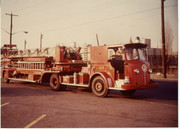

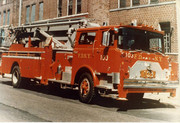

- Status
- Not open for further replies.
